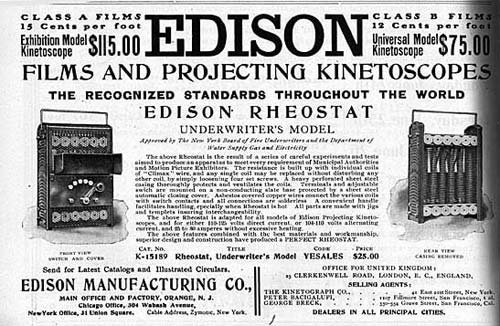Early movie reviews
Russian writer Maxim Gorky wrote one of the first movie reviews in 1896 after seeing a collection of Lumiere films. Film/sound editor Walter Murch introduces the piece:
It is written on a completely clear slate, by someone who had not already been taught how to regard the cinema by a thousand other writers, and the newness of it all leaps from the page. What is remarkable is Gorky’s prescience in the last two paragraphs, as he leaps ahead from his description of the first films to speculation on what directions the cinema might eventually take, toward sex and violence. How did he know?
The bulk of Gorky’s short review concerns the absence of color and sound from the films, as if he’s viewing shadows of reality.
Their smiles are lifeless, even though their movements are full of living energy and are so swift as to be almost imperceptible. Their laughter is soundless although you see the muscles contracting in their grey faces. Before you a life is surging, a life deprived of words and shorn of the living spectrum of colours — the grey, the soundless, the bleak and dismal life.
In a collection of accounts of new technology, the NY Times has a pair of film reviews, the first from the Paris debut of the Lumiere films in 1895:
Photography has ceased to record immobility. It perpetuates the image of movement. When these gadgets are in the hands of the public, when anyone can photograph the ones who are dear to them, not just in their immobile form, but with movement, action, familiar gestures and the words out of their mouths, then death will no longer be absolute, final.
And this one from the projectionist of the first Lumiere in NYC:
You had to have lived these moments of collective exaltation, have attended these thrilling screenings in order to understand just how far the excitement of the crowd could go. With the flick of a switch, I plunge several thousand spectators into darkness. Each scene passes, accompanied by tempestuous applause; after the sixth scene, I return the hall to light. The audience is shaking. Cries ring out.
The Times also has a short article previewing the debut of Thomas Edison’s vitascope1, which demonstrates the difficulty in describing this new technology to the public.
The vitascope projects upon a large area of canvas groups that appear to stand forth from the canvas, and move with great facility and agility, as though actuated by separate impulses. In this way the bare canvas before the audience becomes instantly a stage upon which living beings move about.

That sounds a bit boring but audiences loved it.
So enthusiastic was the appreciation of the crowd long before this exhibition was finished that vociferous cheering was heard. There were loud calls for Mr. Edison, but he made no response.
By 1898, the language of cinema was beginning to sort itself out, more or less, as this Times editorial notes.
All the resources of the word-builders see to have been exhausted in finding names for the simple but ingenious machine that throws moving pictures on a screen. The essential features in every device of this sort are the same — a brilliant light before which a long band of minute photographs is rapidly drawn, and a lens to focus and distribute the rays properly. The arrangements for the manipulation of the light, the band, and the lens are numerous, but they vary only in the inconsequential details, and for all practical purposes the machines are identical. Some mysterious impulse, however, has impelled almost every purchaser of the apparatus to buy with it, or to invent for it, a distinctive name. Vitascope and biograph are most familiar here, with cinematograph coming next at a considerable distance. These hardly begin the list that might be formed from a careful study of the amusement advertisements in the papers of this and other countries. From such sources might be taken phantoscope, criterioscope, kinematograph, wondorscope, animatoscope, vitagraph, panoramograph, cosmoscope, anarithmoscope, katoptikum, magniscope, zoeoptrotrope, phantasmagoria projectoscope, variscope, cinograph, cinnomonograph, hypnoscope, centograph, and xograph. This is far from exhausting the supply. Electroscope exists, and so do cinagraphoscope, animaloscope, theatrograph, chronophotographoscope, motograph, rayoscope, motorscope, kinotiphone, thromotrope, phenakistoscope, venetrope, vitrescope, zinematograph, vitropticon, stinnetiscope, vivrescope, diaramiscope, corminograph, kineoptoscope, craboscope, vitaletiscope, cinematoscope, mutoscope, cinoscope, kinetograph, lobsterscope, and nobody knows how many more. Here, surely, is a curious development of the managerial mind.

It’s difficult to read these accounts and not think about how we’ll all sound in 100 years as we now attempt to explain the internet, mobile phones, the web, blogs, and the like.
[1] Edison didn’t actually invent the vitascope. Thomas Armat sold the rights to his invention to The Edison Company on the condition that Edison could claim to have invented it. ↩





Stay Connected